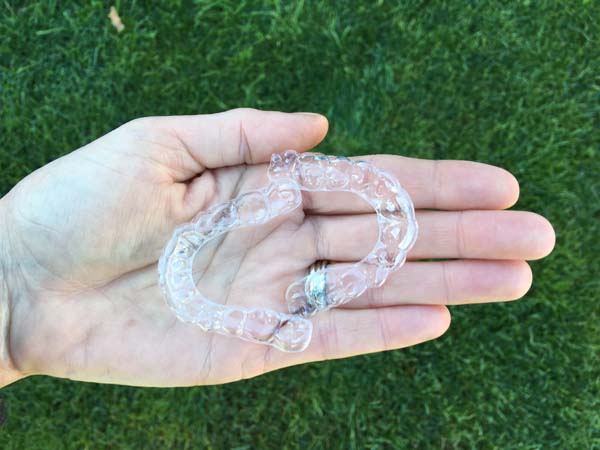Can an Invisalign Dentist Fix My Gapped Teeth?

The Invisalign® system has changed the way some dentists and orthodontists work to repair cosmetic issues in a variety of patients. This clear tooth alignment system has allowed dental professionals to treat and correct these problems without the use of metal braces and has been especially useful in fixing gaps between the teeth. If you suffer from this imperfection and are curious if the system might help, contacting a dentist familiar with Invisalign® can be an effective first step toward achieving a more confident smile.
How does the system work?
Invisalign® teeth aligners are designed to fit the shape of an individual’s mouth and correct issues such as overbite, underbite and crooked teeth. The aligner is changed every few weeks and may be used for as briefly as six months or as long as 18 months. A dentist can gauge how long a patient will need to wear the aligner to correct gapped teeth.
The alignment system closes troublesome tooth gaps by shifting the position of the teeth over time. However, unlike metal braces, the plastic implement can be easily removed for oral care or for eating comfortably.
Does the aligner work on large gaps?
Invisalign® can fix most types of tooth gaps. However, larger gaps may take longer to correct, and patients might need to wear the aligner up to two years in this case. If the gaps are located on the upper teeth, a dentist may attach composite to several affected areas so they move properly once the aligner starts to work. Since all tooth gaps are different, a dental team will likely take x-rays and perform an oral exam before it is decided whether using the clear aligner is the best option for repairing the issue.
Are tooth gaps dangerous?
While using the Invisalign® system can be effective in repairing and improving smiles, it can also help reduce the risk of gum disease brought on by the presence of tooth gaps. When gaps exist between teeth, food particles can become trapped in those spaces and cause the gums to become swollen and irritated. As time passes, gingivitis may develop and lead to infection, bleeding and pain. Closing gaps with the aligner, along with regular brushing and flossing, can help prevent gum disease.
Who can use Invisalign® for gapped teeth?
One of the benefits of this system is that almost anyone can use it, including children. As kids lose baby teeth and new ones begin to come in, gaps may appear, especially in the upper row. Using this aligner can close those gaps while kids are still young and result in a beautiful smile without the need for metal braces.
Adults who have trouble with teeth gaps can ask an Invisalign® dentist about whether the system is the right choice for correcting the issue. While individual cases vary, the clear aligner works to repair gaps in adults of any age.
Conclusion
Gapped teeth affect your smile and may increase the risk of gum disease. Working with an Invisalign® dentist can correct these problems and give you a smile to be proud of.
Are you considering Invisalign® in the Pinehurst area? Get more information at https://www.orthoisfun.com.
Check out what others are saying about our services on Yelp: Read our Yelp reviews.
Related Posts
Have you been looking into braces treatment to achieve a more aligned smile? A braces specialist is an orthodontic professional with specialized expertise that leads to a more comfortable and efficient orthodontic experience. Working with a braces specialist gives you access to advanced skills, personalized treatment plans, and modern technology for better comfort and oral…
When someone searches the phrase "Invisalign® near me," they often want a nearly invisible option to straighten their teeth, but there is more at stake than just alignment. A well-aligned smile can impact how others perceive professionalism, trustworthiness, and social ease. In many careers, first impressions and clear communication carry weight, and a straight smile…
Early orthodontic treatment makes it possible to spot and correct dental issues in children. With this proactive care, an orthodontist can guide jaw growth, improve tooth alignment, and lower the chance of more complex treatment later on. Recognizing the common signs that a child could benefit from early orthodontic treatment can support a healthy, confident…
Dental braces are one of the most common orthodontic treatments used to correct misaligned teeth. They improve both your oral function and appearance. With advancements in orthodontics, patients now have access to a range of options tailored to individual needs.Traditional metal braces are the most commonly used type of orthodontic treatment and have been the…
